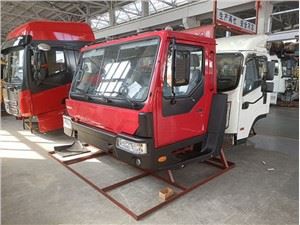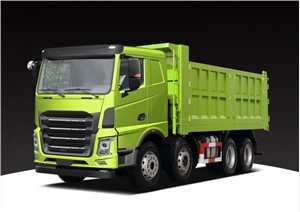Chemical Truck: A Comprehensive Guide to Safe Transportation and Usage

Introduction
Chemical trucks play a crucial role in transporting various chemicals safely and efficiently across different industries. Whether it’s agricultural chemicals, industrial fluids, or hazardous materials, understanding how these trucks function, their types, safety measures, and regulations is essential for businesses and individuals alike. This article aims to provide an in-depth look at chemical trucks, their features, operational processes, and best practices in the industry.
What is a Chemical Truck?
A chemical truck is a specialized vehicle designed to transport chemicals, whether they are hazardous or non-hazardous. These trucks are built with specific safety features to ensure the secure transport of their cargo. The design, construction, and operational features of chemical trucks vary based on the type of chemicals they are intended to carry.
Types of Chemical Trucks
There are several types of chemical trucks, each designed for specific applications and types of chemicals. Here are some of the most common types:
1. Tank Trucks
Tank trucks are equipped with cylindrical tanks and are often used to transport liquids, including chemicals. These trucks may feature insulated tanks to maintain temperature and prevent chemical reactions.
2. Box Trucks
Box trucks can also transport chemicals in solid or packaged form. These trucks are enclosed and provide additional protection against spills and contamination.
3. Specialized Tank Trailers
These are essentially larger tank trucks that are towed by another vehicle. They are designed for transporting bulk chemicals and can often carry larger quantities than standard trucks.
Key Features of Chemical Trucks
Chemical trucks are equipped with several key features to ensure the safety and efficiency of their operation:
1. Safety Systems
Safety is paramount when transporting chemicals. Most chemical trucks are outfitted with specialized safety systems, which may include:
- Emergency shut-off valves
- Pressure relief valves
- Leak detection systems
2. Material Compatibility
Different chemicals require different types of containment materials. Chemical trucks are constructed from materials that are compatible with the chemicals they transport, such as stainless steel or specialized polymers.
3. Loading and Unloading Mechanisms
Efficient loading and unloading mechanisms are critical for chemical trucks. Many of these trucks utilize pump systems or gravity-fed methods to handle their cargo safely.
4. Regulatory Compliance
Chemical trucks must adhere to various local, state, and federal regulations, including the Department of Transportation (DOT) and Environmental Protection Agency (EPA) guidelines. This includes proper labeling and documentation for hazardous materials.
Operational Processes in Chemical Trucking
The operation of a chemical truck involves several critical processes that ensure safety and efficiency:
1. Pre-Trip Inspection
Before embarking on a journey, drivers must conduct a thorough inspection. This includes checking:
- Brakes and tires: Essential for safe travel.
- Tank integrity: Ensuring there are no leaks.
- Emergency equipment: Fire extinguishers, spill kits, etc.
2. Loading Procedures
Loading chemicals requires strict adherence to safety protocols. Operators must:
- Wear appropriate Personal Protective Equipment (PPE).
- Ensure proper containment methods are in place.
- Follow instructions for mixing and loading.

3. Transportation Best Practices
While on the road, following best practices helps prevent accidents and ensures efficient transport:
- Maintain appropriate speed limits.
- Keep a safe distance from other vehicles.
- Be prepared for road conditions and hazards.
4. Unloading Procedures
Unloading chemicals should be done with the same careful consideration as loading. Key steps include:
- Using designated unloading areas.
- Monitoring for leaks or spills during unloading.
- Properly labeling and storing chemicals after delivery.
Chemical Truck Regulations and Standards
Understanding the regulations governing chemical trucking is vital for compliance and safety:
1. Federal Regulations
The Federal Motor Carrier Safety Administration (FMCSA) regulates the transportation of hazardous materials, outlining requirements for:
- Driver qualifications and training.
- Vehicle maintenance and inspections.
- Safety management protocols.
2. State Regulations
Different states may have additional regulations that apply to chemical trucking. It is essential to check local laws to ensure compliance.
3. Hazardous Material Identification
Chemical trucks must use appropriate placarding, which indicates the type of chemical being transported. This helps first responders in case of an emergency.
Challenges in Chemical Trucking
Transportation of chemicals comes with unique challenges that both drivers and companies must navigate:
1. Spill Prevention and Response
Despite best efforts, spills can occur. Having a comprehensive spill response plan is essential. This should include:
- Immediate reporting measures.
- Emergency response teams and kits.
- Training for drivers on dealing with emergencies.
2. Driver Training and Safety
Ensuring that drivers are adequately trained in handling chemicals is crucial. Ongoing training should cover:
- Proper loading and unloading techniques.
- Understanding Material Safety Data Sheets (MSDS).
- Emergency response and first aid.
3. Environmental Concerns
Chemical spills and accidents can have severe environmental impacts. Companies must implement rigorous safety and containment measures to protect the environment.
Advancements in Chemical Truck Technology
As technology evolves, innovations in chemical truck design and operation are continuously emerging:
1. Telematics
Telematics technology allows for real-time tracking of chemical trucks, enhancing safety and monitoring performance metrics.

2. Automated Safety Features
Modern chemical trucks may come equipped with advanced safety features such as collision avoidance systems and automatic braking technologies.
3. Eco-Friendly Options
With growing environmental concerns, the industry is seeing an increase in eco-friendly options, such as electric chemical trucks and alternative fuel sources.
Best Practices for Chemical Trucking Companies
Implementing best practices is key to operating successfully in the chemical trucking industry:
1. Comprehensive Training Programs

Deploying structured training programs can ensure that all employees are familiar with safety standards and regulations.
2. Regular Maintenance Checks
A regular maintenance schedule is essential for ensuring that vehicles operate efficiently and safely. This includes:
- Routine inspections.
- Addressing any mechanical issues promptly.
- Updating safety equipment as needed.
3. Creating a Safety Culture
Encouraging a workplace culture that prioritizes safety will lead to better adherence to practices and ultimately reduce risks.
Practical Examples and Tips
Here are practical examples and tips for individuals and companies dealing with chemical trucks:
1. Example of Loading Chemicals
When loading herbicides into a tank truck, workers should:
- Verify the chemical compatibility with the tank material.
- Use spill containment trays during the loading process.
- Check that all fittings are secure before starting the transfer.
2. Tip for Route Planning
Planning the route is crucial for chemical trucking. Companies should consider:
- Avoiding congested areas or construction zones.
- Mapping out emergency route options.
- Staying updated on weather conditions that could impact travel.
3. Example of Unloading Safely
During the unloading of a highly corrosive chemical:
- Ensure PPE is worn by all personnel involved.
- Have spill containment measures in place.
- Confirm that the receiving container is correctly labeled and compatible.
Frequently Asked Questions (FAQ)
1. What types of chemicals can be transported with chemical trucks?
Chemical trucks can transport a wide range of substances, including liquids, solids, hazardous materials, and non-hazardous chemicals, depending on their design and capabilities.
2. How do I ensure my chemical truck is compliant with regulations?
Regularly review federal and state regulations related to hazardous materials, maintain updated training for drivers, and conduct routine inspections on vehicles.
3. What should I do in case of a chemical spill?
Immediately report the spill to the relevant authorities, evacuate the area if necessary, and follow your company’s emergency response plan, including using spill kits.
4. Are there specific certifications required for drivers of chemical trucks?
Yes, drivers typically need to have specific training and certifications that may include a Hazardous Materials (HazMat) endorsement in addition to a valid commercial driver’s license (CDL).
5. What materials are used in the construction of chemical trucks?
Chemical trucks are often constructed from materials like stainless steel, aluminum, or specialized polymers that are designed to withstand the chemical properties of the materials being transported.
6. What safety equipment should be mandatory on chemical trucks?
Mandatory safety equipment may include fire extinguishers, spill kits, first aid kits, emergency response guides, and proper placarding for hazardous materials.
